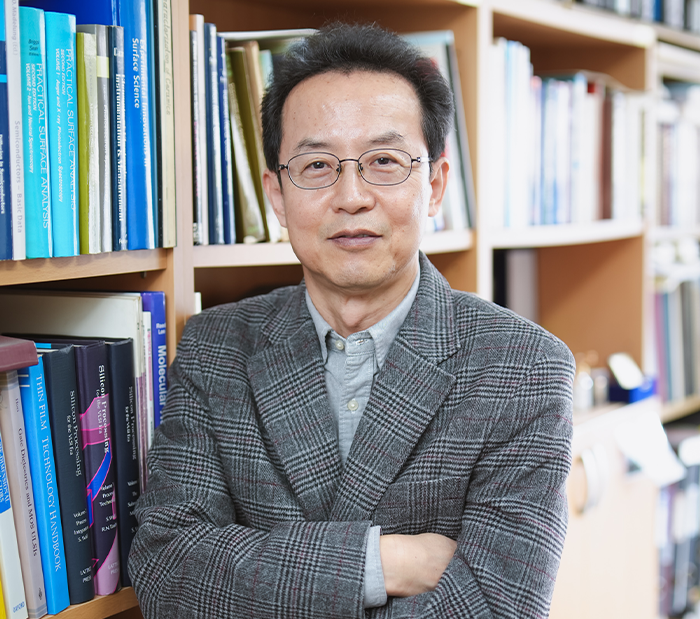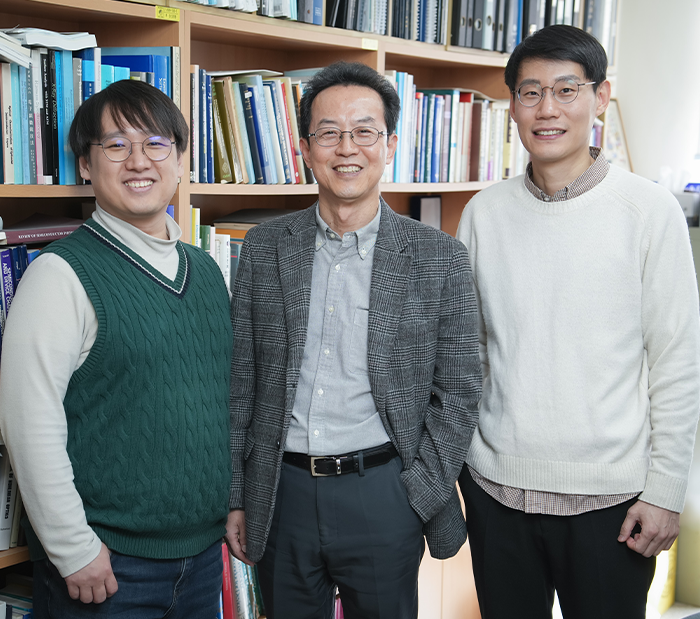Predicting and demonstrating of hidden metastable phase in transition metal oxide
Advanced Materials Science and Engineering LEE, JAICHAN Prof. · Bongwook Chung
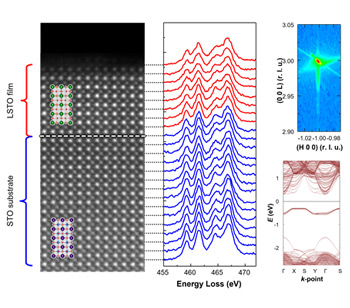
-
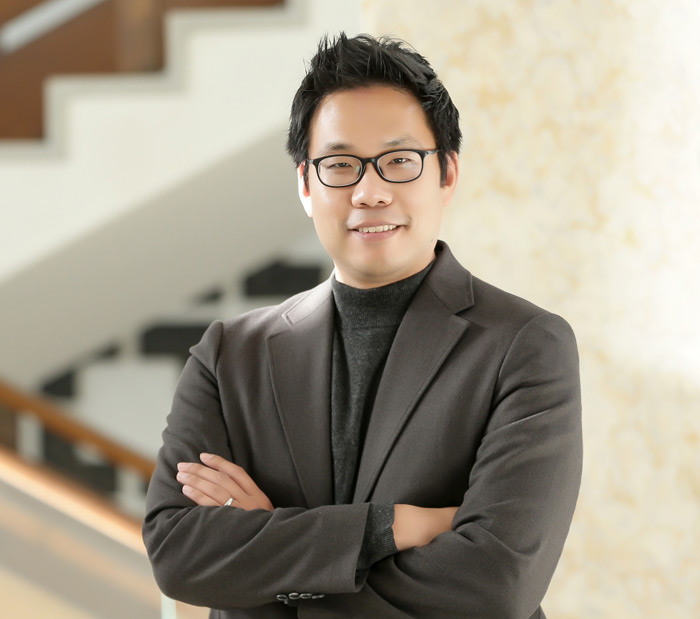
Psychology KIM, MINUE Prof.
Using Natural Language Processing Algorithms to Track Emotions From 30 Years of K-Pop Hits
Prof. Minue Kim (Department of Psychology) collaborated with Prof. Wonkwang Jo (Graduate School of Public Health, Seoul National University) on a research project entitled, Tracking emotions from song lyrics: analyzing 30 years of K-pop hits. Emotions that are shared by a large number of people are known to broadly impact affective experiences at the individual level. Music, especially hit songs that have garnered popularity in a society, can be usefully viewed as being reflective of the emotional preferences and experiences of its members. As such, analyzing the musical features of K-pop songs that emerged as hits over time may offer a useful strategy for understanding the emotional characteristics of Koreans at the sociocultural level. K-pop has risen in popularity in the mainstream music scene and is enjoying a more global reach than before, and thus the emotions expressed in K-pop have implications beyond Korea. Using text mining and natural language processing algorithms on 30 years of K-pop hit songs, we sought to answer the following research questions: What are the emotions observed in K-pop lyrics, and how do they change over time? Specifically, using morpheme frequency analysis and structural topic modeling on song lyrics, we sought to investigate the changes in the appearance of words and topics conveying positive and negative emotions. In this work, we used lyrics from songs on Melon’s top 100 list for each year from 1990 to 2019 as our data. Both morpheme frequency analysis and STM yielded converging results: The proportion of adjectives and topics that express positive emotions showed an increasing trend in the past 30 years. Conversely, the proportion of topics that convey negative emotions showed a decreasing trend during the same time period. Surprisingly, this temporal shift is the exact opposite of what prior research has found from popular songs in the United States. These seemingly conflicting observations may be reconciled by considering cultural differences: that the United States boasts a highly individualistic culture, whereas Korea is a traditionally collectivistic culture. For instance, in an already individualistic culture like the United States, further increases in individualistic traits may exacerbate the adverse aspects of individualism (e.g., a rise in narcissistic traits). On the other hand, beneficial features of individualism emerge as individualistic traits increase, at least initially, in a collectivistic culture such as Korea. Individualistic values being introduced to a collectivistic society could encourage people to pursue their individual goals and life course, while distancing themselves against the potentially excessive obligation to the community. We also argue that economic growth (e.g., rise in individual purchasing power and gross domestic product) may also have served as the background for increasing feelings of and/or preference for positive emotions. More generally, our study illustrates a strategy for tracking emotions that people value and prefer from large natural language data, supplementing existing methods such as self-reported surveys and laboratory experiments. This work is published at ‘Emotion’ (https://doi.org/10.1037/emo0001185). *Tracking emotions from song lyrics: Analyzing 30 years of K-pop hits (Journal: Emotion, DOI: 10.1037/emo0001185)
- No. 210
- 2022-12-19
- 2076
-
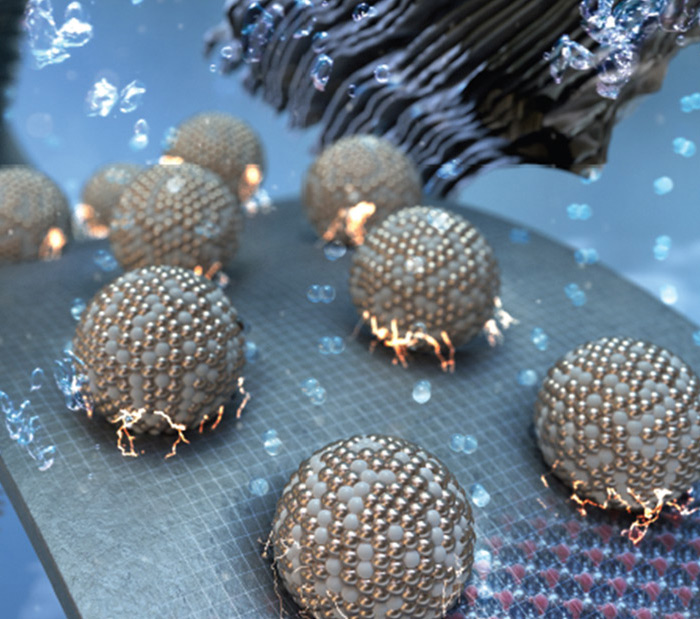
Chemical Engineering LEE, JUN YOUNG Prof. ·Prof. Jung Kyu Kim, Nguyen Duong Nguyen
Green Hydrogen Catalyst Material with New MXene-Ni2P Phosphide Hybrid
Prof. Jun Young Lee (School of Chemical Engineering) and Prof. Jung Kyu Kim (School of Chemical Engineering) reported his collaboration research achievements with Prof. Hyeyoung Shin (Graduate School of Energy Science and Technology, Chungnam National University): Interfacial Strain-Modulated Nanospherical Ni2P by Heteronuclei-Mediated Growth on Ti3C2Tx MXene for Efficient Hydrogen Evolution. Since the global warming problem from usage of fossil fuel, the hydrogen fuel is getting attention due to clean and renewable properties. Among various strategies for hydrogen evolution reaction (HER), electrochemical water splitting is regarded as potential approach for zero-carbon emission process. In general, the novel metal based materials, such as Pt, Pd, Ir and Ru, have been applied for the most efficient HER catalyst. However, the scarcity of novel metal and unstability in electrolyte properties hinder to scale-up the hydrogen production process. To replace novel metals, non-novel metal based materials have been exploited as an promising candidate for HER electrocatalysts. Among them, Ni2P has been studied as hot topic because of its highly activity HER. However, it is still far from replacing noble metal based catalyst due to its poor intrinsic poor conductivity and stability. In this work, we demonstrated a hybrid catalyst with Ni2P and Ti3C2Tx (MXene), which consisting chemically anchored Ni2P on surface-defect engineered MXene. Using collodial synthesis, Ni2P species were in situ heteronuclei growth on surface defect point of MXene to syntehsize strongly coupled heterostructure. Notably, the significant tensile strain of the Ni2P lattice was found at the interface between Ni2P and MXene. The strain changed atom bond length and electronic structure of matrials, and it induced more preferable reaction mechanism for HER. Consequently, the Ni2P @MXene hybrid exhibit outstanding electrocataytic activity with 123.6 mV at 10mA cm-2 and long-term stability. We propose the hybridization between Ni2P and MXene open up a novel strategy for design efficient non-noble metal based catalyst. This research achievement was selected as the cover art of journal ‘Small’ (DOI: https://doi.org/10.1002/smll.202204797) *Interfacial Strain-Modulated Nanospherical Ni2P by Heteronuclei-Mediated Growth on Ti3C2Tx Mxene for Efficient Hydrogen Evolution (저널: Small, DOI: 10.1002/smll.202204797) ▲ A depiction of the growth of heterogeneous nuclei of 0-dimensional spherical nickel phosphide on the surface of a 2-dimensional plate-shaped MXene material. Strain occurs at the hybrid material interface to secure excellent green hydrogen production performance. ▲Cover art of journal 'Small'
- No. 209
- 2022-12-06
- 2679
-
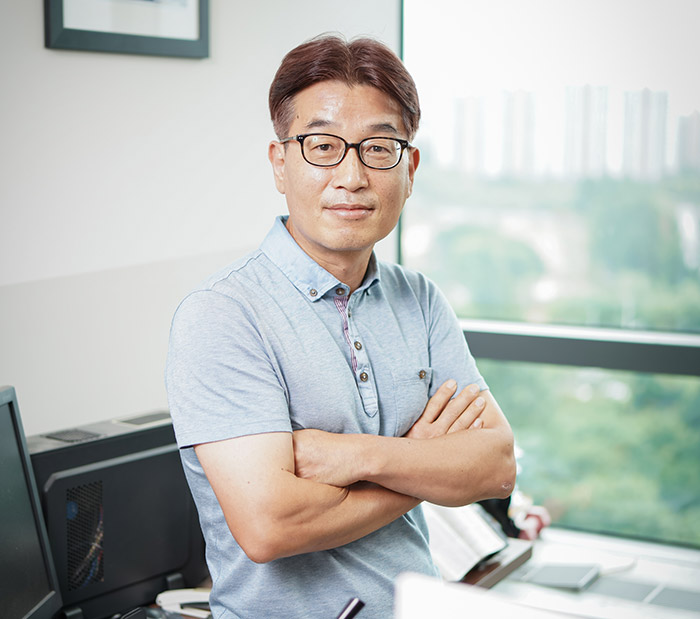
Medicine LEE, KI YOUNG Prof. ·Mi Jung Kim, Ji Soo Lee, Ji Young Kim
A Novel Mechanism for the Regulation of Lung Cancer Progression by Cereblon (CRBN)
Cereblon (CRBN) has been identified as a primary target of immunomodulatory drugs in multiple myeloma. Herein, for the first time, we demonstrate that CRBN expression is functionally involved in lung cancer progression through the regulation of autophagy by toll‐like receptor (TLR)2, TLR4 and TLR7. TLR signalling is associated with the induction of autophagy and plays a pivotal role in the progression and pathogenesis of lung cancer. The onset and development of lung cancer are regulated by a variety of external and internal factors that influence the tumor microenvironment (TME). The downregulation or upregulation of genes in lung cancer cells is highly likely to be implicated in the pathogenesis and progression of lung cancer. In this study, we show that CRBN is downregulated in lung cancer cells and associated with lung cancer progression. Notably, we found that CRBN inhibits the BECN1 ubiquitination to induce autophagy and attenuates the production of IL‐6, CCL2, CCL20 and MMP2 cytokines in response to TLR stimulations in healthy lung cells expressing CRBN (Figure 1). In lung cancer cells with downregulated CRBN (Figure 1), engagements of TLRs enhance autophagy induction through the increases of BECN1 ubiquitination and the production of IL‐6, CCL2, CCL20 and MMP2 cytokines, eventually facilitating lung cancer progression. Taken together, our clinically comparative results and functional investigations of CRBN in lung cancer progression will potentially contribute to translational approaches for lung cancer intervention. Additionally, CRBN can be a potent prognostic marker for lung cancer and provides important implications in clinical and translational lung cancer biology. Article: Kim MJ, Lee JS, Kim JY, Choi B, Son J, Min Y, Jeong SK, Kim DH, Lee JS, Chun E, Lee KY. CRBN is downregulated in lung cancer and negatively regulates TLR2, 4 and 7 stimulation in lung cancer cells. Clinical and translational medicine (IF: 11.492). 2022 Sep;12(9):e1050.
- No. 208
- 2022-12-01
- 2213
-
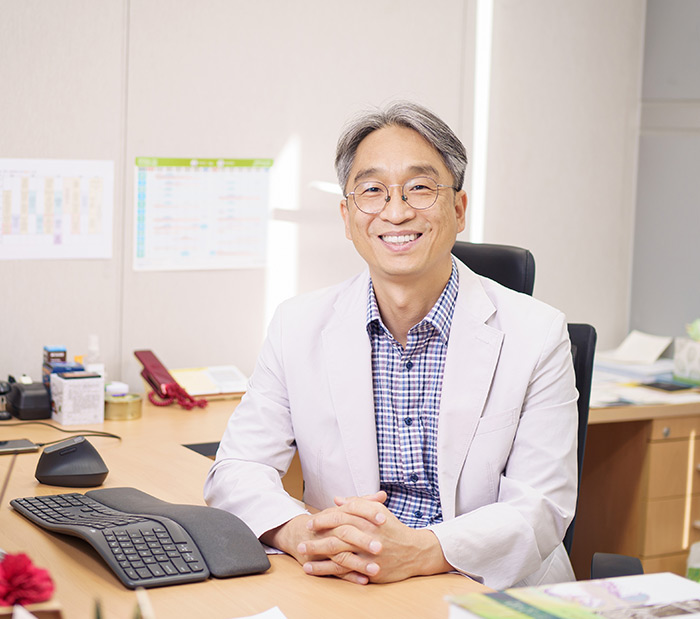
Biomedical Engineering PARK, JANGYEON Prof.
World's first development of ultrahigh temporal resolution brain neuronal activity imaging technology that can see...
World's first development of ultrahigh temporal resolution brain neuronal activity imaging technology that can see the flow of thoughts The research team led by Professor Jang-Yeon Park of the Department of Biomedical Engineering at Sungkyunkwan University has developed the world’s first next-generation brain function imaging technology that can directly image brain neuronal activity in vivo with ultra-high resolution of a few milliseconds. The main verification of the proposed brain neuronal activity imaging technology was carried out in collaboration with the research team of Professor Jeehyeon Kwag of Korea University (currently Seoul National University), an electrophysiology research group. Non-invasive brain function imaging (or neuroimaging) techniques play an important role in elucidating how the brain functions in vivo. However, the most widely used non-invasive brain functional imaging techniques, such as electroencephalogram(EEG), magnetoencephalogram(MEG), and functional magnetic resonance imaging(fMRI), have distinct advantages and disadvantages in terms of temporal and spatial resolution, acting as important limitations for in vivo brain research. For example, EEG and MEG give low spatial resolution (~centimeters, cm) despite high temporal resolution (~milliseconds, ms), and functional magnetic resonance imaging (fMRI) provides low temporal resolution (~seconds, sec) despite high spatial resolution (~millimeters, mm), providing only indirect neural activity information based on blood flow. Prof. Park’s research team predicted that direct imaging of neural activity (DIANA) would be possible if magnetic resonance imaging (MRI) with a temporal resolution of several milliseconds, which is comparable to the time scale of neural action potentials, was implemented. The research team realized ultra-high time resolution in milliseconds using a method of segmenting image data. Using this, the neural activity directly transmitted in the brain neural network could also be imaged. In addition, the research team proposed an important biophysical hypothesis for possible signal sources of DIANA. Prof. Par’s research team verified the proposed brain neuronal activity imaging technique using an in vivo mouse brain in a 9.4T animal MRI system. By applying repetitive electrical stimulation to the mouse whiskers, time series images of DIANA in neural networks including the thalamus and primary somatosensory cortex (S1) were acquired with s spatial resolution of 0.22 mm and a temporal resolution of 5 ms. As a result, DIANA responses in S1 were confirmed at 20-25 ms and at 10-15 ms in the thalamus, which successfully imaged how neuronal activity propagates in the thalamus-cortical pathway. In addition, the research team proposed a change in T2 relaxation time due to changes in membrane potential and cell volume accompanying neural activity as a new contrast mechanism for DIANA. The novel brain function imaging technique proposed by Prof. Park’s research team can show how neural activity is transmitted in the brain neural network in vivo, along with direct imaging of neural activity, by imaging brain neural activity with a time resolution of a few milliseconds. Through this next-generation brain function imaging technology, it is expected to implement a dynamic brain neural network model close to reality that can reflect and express how brain functions are actually performed in various cognitive processes. From a clinical point of view, it is also expected to contribute greatly to individual precision diagnosis, the trend of modern medicine, by enabling objective and quantitative evaluation of cognitive impairments in neurodegenerative diseases such as Alzheimer’s disease and Parkinson’s disease, as well as mental disorders including depression and neurodevelopmental disorders. Professor Park said, “This study is very meaningful in that it realized an in vivo brain neural activity imaging with both high temporal and high spatial resolution, which has been a long-cherished dream in the field of brain function imaging.”, and also said, “In particular, being able to image neural activity and its propagation in high spatiotemporal resolution in the neural network means that the flow of information, that is, the flow of thoughts, can be seen in the cognitive process in the brain neural network. Through this, it is expected that an in-depth understanding of the ‘thinking brain’ will be possible by elucidating the hierarchical connectivity of brain functions.” He finally added, “If it is proven that DIANA can also be applied to humans, it could be a game changer in the field of brain science.” The results of this study were published as a Research Article on October 14, 2022 in ‘Science’ (IF: 47.728), along with Perspectives, a commentary article published together with noteworthy papers. Also, along with the publication of the paper, Nature news covered an article on this paper. In addition, The Scientist(UK), STAT news(USA), and ChosunBiz(Korea) also published articles about this paper. ※ Paper Title: “In vivo direct imaging of neuronal activity at high temporo-spatial resolution” ※ Science, https://www.science.org/doi/10.1126/science.abh4340 [Fig. 1] High temporo-spatial resolution DIANA captures thalamocortical spike propagation. (A) Illustration of the DIANA experiment to image contralateral S1BF and thalamus applying electrical stimulation to left whisker pad in an anesthetized mouse on a 9.4 T scanner (right) and brain imaging of a coronal slice containing both thalamus and S1BF regions (left). (B) BOLD activation map obtained as a reference (n = 10 mice). (C to E) Time series of t-value maps of DIANA for 30 ms after whisker-pad stimulation in 5 ms temporal resolution from 5 mice (C), percent changes in DIANA signals (D), and bar graphs showing the mean latencies of peak DIANA responses from the thalamus (green) and contralateral S1BF (magenta) (E) (n = 10 mice, ****: p < 0.0001, paired t-test). (F) Top: Illustration of electrophysiological recording in mice in vivo with silicon probes implanted in the thalamus and the contralateral S1BF applying electrical whisker-pad stimulation, Bottom: Electrode track marking using a fluorescent lipophilic dye (DiI). (G and H) Multi-unit activity (MUA) (black trace, top) from which single-unit spikes (bottom) were analyzed in the thalamus (green) (G) and the contralateral S1BF (magenta) (H). (I) Post-stimulus time histogram (PSTH) of the whisker-pad stimulation-responsive single units over time in the thalamus (top) and contralateral S1BF (bottom) with DIANA signals superimposed for comparison. (J) Bar graph showing the latencies of peak spike firing rates of whisker-pad stimulation-responsive single units recorded from the thalamus (light green, n = 23 units from 10 mice) and contralateral S1BF (light magenta, n = 23 units from 5 mice). Vertical dotted lines indicate the whisker-pad stimulation on a set time (red) (D, and G to I) and latency of peak spike firing rate (thalamus, green; contralatera lS1BF, magenta) (I). (****:p < 0.0001, unpaired t-test). All data are mean ± SEM. [Fig. 2] Sublayer-specific DIANA responses revealed functionally distinct sublayer-specific microcircuits. (A and B) Illustration of DIANAexperiment (A) and in vivo spike recording (B) in VPMd, VPMv, POm, S1BF, and S2 in response to electrical whisker-pad stimulation. Yellow dotted boxes in (A, right) indicate extraction areas of DIANA heatmaps. (C) Heatmap (left) and temporal profile (middle) for percent change in DIANA signal, displayed with a mean latency of peak DIANA response from VPMd (dark green), VPMv (green), and POm (lightgreen) (right) (n = 9 mice). (D) Heatmap of in vivo-recorded single-unit spike firing rate normalized to the peak firing rate (left) and temporal profile of spike firing rate (middle), displayed with a mean latency of peak spike firing rate in VPMd (darkgreen, n = 22 units from 16 mice), VPMv (green, n = 15 units from 16 mice), and POm (lightgreen, n = 59 units from 14 mice) (right). (E and F) Same as (C) and (D) but for DIANA experiments (n = 9 mice) and spikes recorded from S1BF in L2/3 (light pink, n = 9 units from 28 mice), L4 (pink, n = 51 units from 28 mice), L5 (magenta, n = 60 units from 28 mice), and L6 (dark magenta, n = 18 units from 28 mice). (G and H) Same as (C) and (D) but for DIANA experiments (n = 9 mice) and spikes recorded from S2 in L2/3 (light orange, n = 6 units from 20 mice), L4 (orange,n = 27 units from 20 mice), L5 (brown, n = 35 units from 20 mice), and L6 (dark brown, n = 14 units from 20 mice). The base in DIANA heatmaps indicates the average of pre-stimulation frames. The asterisk in the middle of (C) and (E) indicates the statistically significant negative signal. All data are mean ± SEM. *: p < 0.05, **: p < 0.01, ****: p < 0.0001, n.s.: p > 0.05 for paired, unpaired, and Welch t-test. * News Link Nature https://www.nature.com/articles/d41586-022-03276-5 TheScientist https://www.the-scientist.com/news-opinion/new-mri-technique-tracks-brain-activity-at-millisecond-timescales-70626 STAT news https://www.statnews.com/2022/10/13/faster-brain-imaging-seems-to-overcome-limitations-of-mri-scans/ Wangyi Newspaper https://c.m.163.com/news/a/HJUQ2AP905349C3F.html?spss=newsapp&spsnuid=oZlx0DZd33OSWgG0kMOOUuM7BDC%2FiTfKiWqAqYquhrd6bSMjx5AhlFPCxNgjPPppLKLFB1b60t5bfMyo%2BfU9vA%3D%3D&spsdevid=01FAE289-ED08-4A0C-8400-E606EBBCD204&spsvid=&spsshare=wx&spsts=1666052754167&spstoken=SfdkYiZhpyVZWhpU%2BRUwim4QV5mcCcJr7ezvwp%2Fwwy%2FIAvHE%2BhK9eCCy270blp2R&spssid=2abc334fb2d6ee470fa4c0642a06a8a8&spsw=2&isFromH5Share=article
- No. 207
- 2022-11-07
- 3198
-
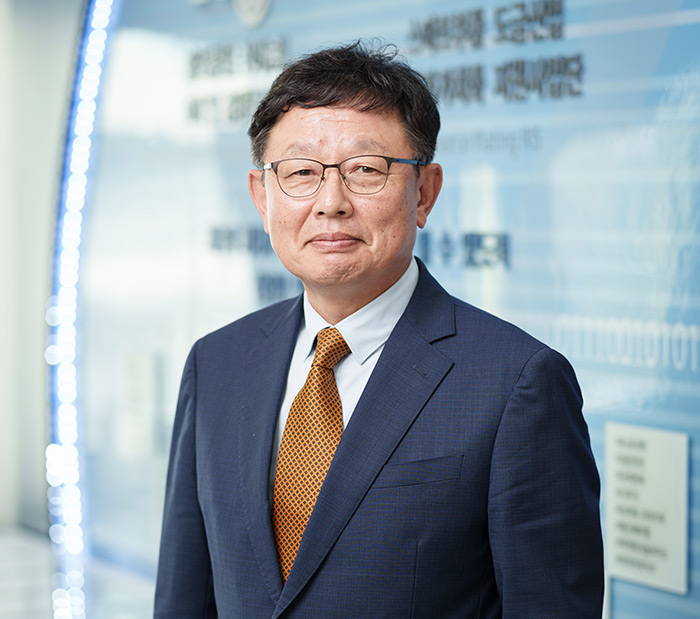
Advanced Materials Science and Engineering SUH, SUJEONG Prof.
Establishment of MEMS and Sensor Research Platform
Sungkyunkwan University's Material & Process Platform Center for Convergence Sensor (Director, Prof. Su-Jeong Suh), supported by the Gyeonggi Regional Research Center (GRRC) project, developed advanced materials and process technologies necessary to secure the original technology with 7 professors and 10 companies. Also, conducting industry-academic research to become a technological and industrial base that leads the global sensor industry by developing Master's and doctorate personnel in the field. Prof. Suh, While working as a professor in the school of Materials Science and Engineering for 33 years, not only academic achievement but also carried out large-scale government support projects based on materials and processes such as Technology Innovation Center (TIC), Regional Research Center (RRC), Regional Innovation system (RIS), Regional Innovation Center (RIC) supported by Ministry of Trade, Industry and Energy, Ministry of Science and ICT, Ministry of Education, Ministry of SMEs and Startups, and Gyeonggi Province. Through these research funds, research equipment infrastructure such as clean rooms and ultra-precision analysis equipment was established. Recently, Prof. Suh established a semiconductor process (cleaning, oxidation, photolithography, etching, sputter, CMP, bonder, etc.) facility for 8-inch wafer processing in the FAB. Through this expansion of the research base, various government projects (technology development projects for Materials ‧ Components ‧ Equipment, core research support center, and University Innovation Center (UIC)) are attracted and carried out with many excellent faculty members. In addition, the center has a performance of infrastructure expansion and technical support for 520 external companies. Prof. Suh, over the past five years, has achieved the application and registration of 29 domestic and oversea patents and 12 technology transfers, including patent transfers to U.S. companies. And he attracted a "field human power development project" using semiconductor infrastructure, and conducted sensor and semiconductor classes producing 314 workers and 522 unemployed workers. In addition, 730 workers and 290 unemployed workers will be trained by 2027. The appointment of Prof. Suh as the distinguished professor is expected to accelerate industry-university cooperation by activating the center's established equipment and a cooperative system with industry.
- No. 206
- 2022-10-26
- 2060
-
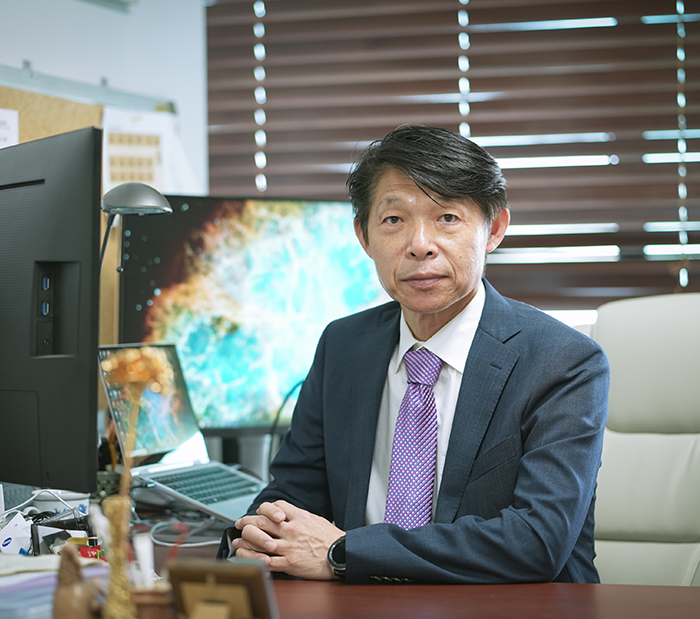
Advanced Materials Science and Engineering YEOM, GEUNYOUNG Prof.
Plasma Processing Laboratory leading Next Generation Semiconductor Etching Technology
Professor Geun Young Yeom (Department of Advanced Materials Science&Engineering) has been selected as one of the distinguished professors of SKKU in 2022. His research group has been working on plasma etching technology for semiconductor devices which is one of the eight process technologies required for the fabrication of semiconductor devices. Here, plasma is an ionized gas known to be the 4th matter following sold, liquid, and gas, and it is used for various processing areas such as deposition, surface treatment, etching, etc. To fabricate nanoscale semiconductors, first, extreme ultra-violet (EUV) light photolithographic technology forming a nano-size patterned polymer mask layer on the substrate is required. However, more importantly, a technology carving the underlying semiconductor layer along the nano-size mask layer formed by the photographic techniques is required and the technology carving the semiconductor material accurately as the mask layer shape is plasma etching technology. Currently, the critical size of semiconductor devices is decreasing by less than a few nanometer scales and the semiconductor device structure is changing from a two-dimensional to a three-dimensional structure. Therefore, not only the etching techniques of various materials but also the deep/vertical etching methods for the formation of three-dimensional devices are required. Therefore, methods to etch nanometer scale materials vertically, selectively, without damaging the semiconductor materials, and accurately with atomic layer scale need to be investigated. Prof. Yeom’s research group has been working on this state-of-the-art semiconductor etch technology for more than 30 years, and it is the most advanced research group on plasma etching technology in Korea actively working with Samsung Electronics, Samsung Display, SK hynix, and various semiconductor equipment companies to lead semiconductor etching technology in the world. Recently, a novel atomic layer etching technology of two-dimensional semiconductors such as MoS2, which are widely investigated as the next generation semiconductor materials replacing silicon material, has been developed first by this group and reported to Nature Communications. Also, the textbook “Plasma Etching Technology” written in 2006 by Prof. Yeom is known to be the “must read” engineering book for plasma etch engineers working on semiconductor device fabrication. Therefore, Prof. Yeom received a Minister Award from the Ministry of Commerce in 2016 for his contribution to the display industry and also received Presidential Award in 2016 for his contribution to the semiconductor industry. Prof. Yeom was not only selected as a distinguished professor in 2002 from SKKU but also selected as a Fellow in 2022 by the American Vacuum Society (AVS), an American Scientific Research Society, that organizes conferences related to semiconductor equipment and processes. He also will receive a Nishizawa Award in Nov. 2022 from the Dry Process Symposium (DPS), a Japanese Scientific Research Society, specializing in semiconductor materials, equipment, and processes.
- No. 205
- 2022-10-05
- 2895
-
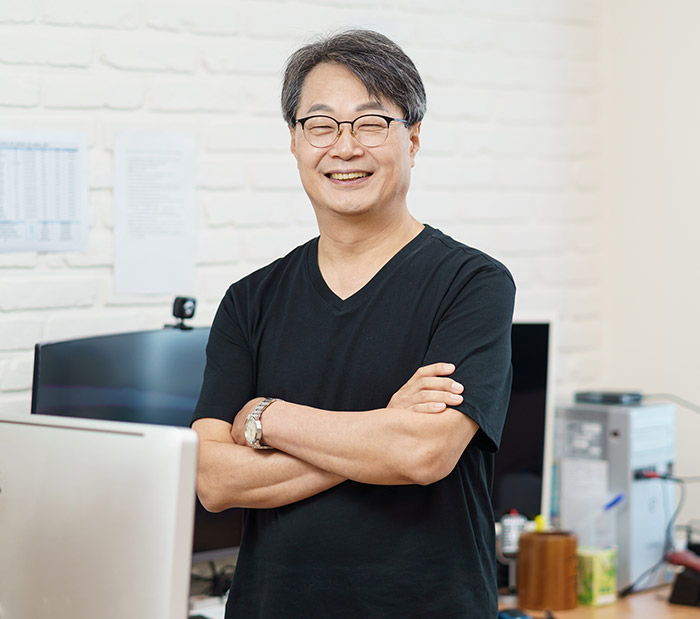
Biological Sciences BAE, YONG-SOO Prof.
Systematic Study of Non-impregnant Organ-specific Immunity to Identify Immunological Challenges
Until now, most immunological research has focused on lymphatic immunity centered in the primary and secondary lymphoid organs, such as bone marrow, thymus, spleen, and lymph nodes. However, recent sporadic research papers have demonstrated new immune cells discovered in non-lymphoid organs, which were not found in the lymphoid organs or tissues, such as liver, lung, kidney, and intestines. It was also disclosed recently that these non-lymphoid organs are maintaining immunosuppressive environments to prevent or protect themselves from the damage of internal or external inflammatory responses. Professor Yong-Soo Bae, who was dedicated as a SKKU Distinguished Professor this time, has been studying for a long time with innate immune cells and related immune responses in these non-lymphatic organs. He established the <Center for Immune Research on Non-lymphoid Organ (CIRNO)> in 2017 and has been leading the research as the Director of the Center with the support of the Science Leading Research Center (SRC) grant from the National Research Foundation of Korea. He said that he would reserve no effort to identify many immunological challenges that could not be explained by lymphoid organ-restricted immune research, thus, pioneering a new academic field. In the Center, nine professors outstanding in the field of immunology (6 from SKKU and 3 from outside) conduct close joint research and collaboration to identify non-lymphoid organ-specific immune cells and their activity, and their mechanism of action with immune modulatory molecules. By elucidating new immune phenomena in non-lymphoid organs through innovative research, Prof. Bae and his colleagues would like to suggest a new alternative to the existing immunotherapy that was limited by lymphatic immune regulation. In addition, Prof. Bae plans to develop a source technology for target-based disease control that can control cancer or inflammatory diseases by controlling key immune cells or immune modulatory molecules in non-lymphoid organs. This research plan was initiated based on his attention to the fact that the immunosuppressive environment of non-lymphoid organs can rather lead to the intractability of cancer and infectious diseases. Last year, the Center published 20 papers in the top international journals and applied for 10 patents at home and abroad. This year, through joint research with Center-affiliated Professor Hyeyoung Kim of Seoul National University, Siglec F+ novel pathogenic neutrophils were found to induce chronic obstructive pulmonary disease in mice exposed to pollutants and published two papers in the related journals, J Clin Invest (IF14.3) https://pubmed.ncbi.nlm.nih.gov/35482420/ and J Aller Clin Immunol (IF14.3) https://pubmed.ncbi.nlm.nih.gov/34653517/. Through a joint study with Center-affiliated Professor Yoe-Sik Bae, a unique phenotype of neutrophils was found to exist only in the lung and published in the Blood journal (22.11) https://pubmed.ncbi.nlm.nih.gov/35679477/. In addition, through joint research with Center-affiliated Professor Yong-Taik Lim, the immune-enhancing and anti-cancer mechanism of a novel adjuvant that was developed by Prof. Lim was investigated and reported to a top academic journal, now in a revision process. Through joint research with three Center-affiliated professors, a newly developed immune cell population was identified in the spleen of mice when treated with a certain anti-cancer cytokine. We investigated the characteristics and induction mechanism of anti-cancer immunity of the cells and are in the submission process to a top journal.
- No. 204
- 2022-09-27
- 2595
-
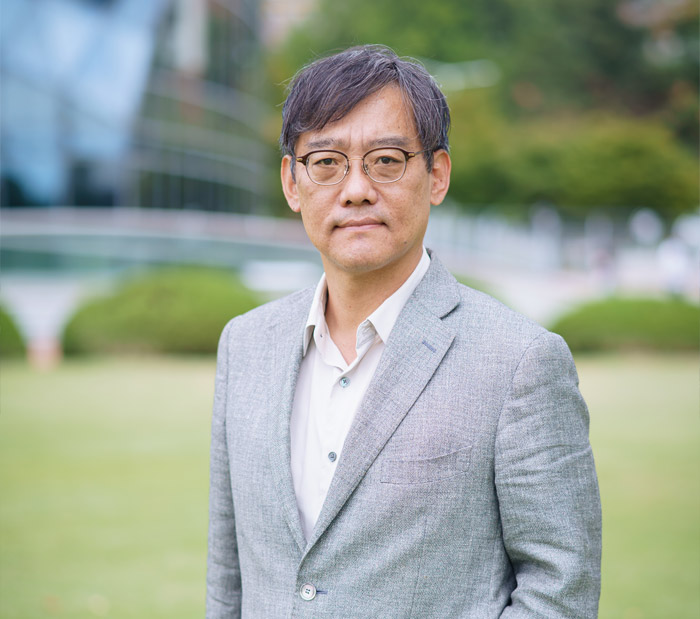
Advanced Materials Science and Engineering CHOI, JAE-YOUNG Prof. ·Youngho Kim, Xue Dong, Sudong Chae
Development of Ultrahigh Porosity MgO Microparticles for Heat-Energy Storage
The joint research team led by Professor Jae-Young Choi (School of advanced materials science and engineering) and professor Hak Ki Yu at Ajou University (Department of materials science and engineering) has developed Ultrahigh-Porosity MgO Microparticles for thermochemical heat-storage reaction with high stability and exceptional reactant permeability. Professor Choi is also the co-CEO of C&C materials. Regarding paper has been published on Advanced Materials with the title “Ultrahigh-Porosity MgO Microparticles for Heat-Energy Storage”. Research on renewable energy, and waste heat retrieval and conversion, has been the key to carbon neutrality. Among those research retrieval of industrial waste heat has earned significant interest. Naturally, the development of materials that can meet the criteria for industrial waste heat retrieval is now more important than ever. [Figure] Schematic illustration of the strategy for synthesizing porous MgO and images of a porous MgO particle. The research team has introduced ultrahigh porous structure to magnesium oxide (MgO), a highly promising candidate for waste heat storage, to develop high-performance heat energy storing material. This Ultrahigh Porosity MgO has 4 times more surface area than commercial MgO, and therefore is free of swelling during heat storage, enabling heat storage capacity 7.2 times bigger than commercial MgO. This Ultra-high Porosity MgO is expected to serve as the key material for chemically storing industrial waste heat, and the research team will carry out follow-up research to develop new materials and control the structure of existing materials to overcome obstacles of nanomaterials. Funded by the National Research Foundation of Korea (NRF), this work has been published in Advanced Materials (IF=32.086) in July 2022. ※ Title: Ultrahigh-Porosity MgO Microparticles for Heat-Energy Storage ※ Authors: Youngho Kim1, Xue Dong1, Sudong Chae1, Ghulam Asghar, Sungwoong Choi, Bum Jun Kim#, Jae-Young Choi#, Hak Ki Yu# ※ DOI: https://doi.org/10.1002/adma.202204775
- No. 203
- 2022-09-16
- 2869
-
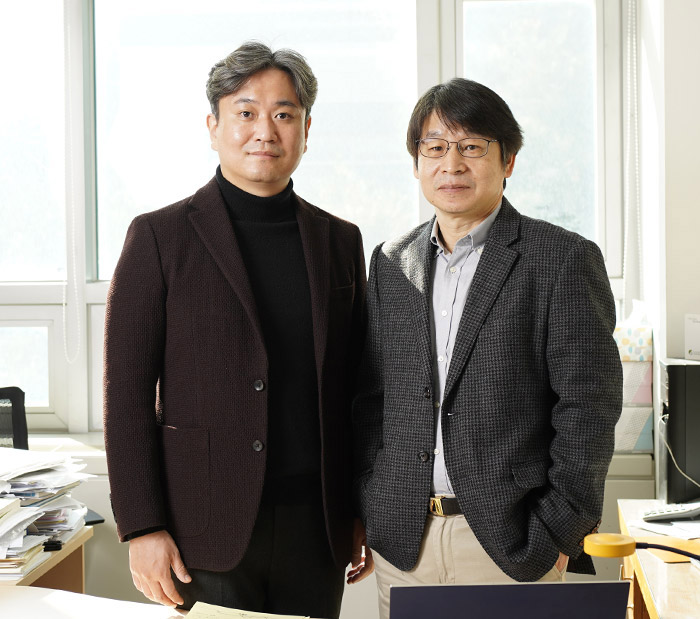
SKKU Advanced Institute of Nano Technology BAE, WANKI Prof. ·Researcher Donghyo Hahm, Researcher Jaemin Lim
Direct Patterning of Colloidal Quantum Dots with Adaptable Dual-ligand Surface
A joint research team from SKKU (Prof. Wan Ki Bae), Sogang University (Prof. Moon Sung Kang), and Electronics and Telecommunications Research Institute (Dr. Chan-mo Kang) have developed ultra-high-resolution quantum dot (QD) patterning technology that could be implemented in nearly all QD photonic applications. The study appears in the journal ‘Nature Nanotechnology’ in August. QDs are a new class of luminophores that stand at the forefront of nearly all light-emitting applications. The success of next-generation QD displays demands multicolor QD patterns on desired substrates over a large area with high-precision and high-definition, and most importantly, without compromising on optical or optoelectronic characteristics of QDs. Here, the researchers devise QD materials that can be processed via photolithographic processes without the presence of photoresists and photoinitiators. Specifically, the researchers devise a dual-ligand passivation system comprising photocrosslinkable ligands (PXLs) and dispersing ligands (DLs) to enable QDs to be universally compatible with solution-based patterning techniques. Upon UV irradiation, PXLs create a covalent bond between the ligands of neighboring QDs. The chemically crosslinked QD films are no longer dispersible when a solvent is applied. Hence, the researchers can achieve QD patterns by selective UV irradiation on QD films followed by development with good solvents. The dual-ligand passivation system awards full freedom to choose the solvent, and thus the processing methods. The dual-ligand passivation approach does not demand extra processing steps besides standard microfabrication processes, promising its immediate and practicable use in a range of photonic applications across academia to industry. The highlight of the present work is the demonstration of high-definition, large-area QD patterns via commercialized photolithography (i-line) or inkjet printing techniques at no cost to the optical properties of QDs or optoelectronic performances of devices implementing them. As an ultimate achievement, the researchers exemplify the integration of bright, multicolored QD patterns attained by the present approach into optoelectronic devices. For the “mixed-reality” (i.e., virtual reality and augmented reality) applications, the QD deposition process should enable the patterning of RGB QDs (or RG QDs along with the blank) into a few micrometer sub-pixels over a large area with high-precision and high-fidelity. The advantages of the present approach are well represented by the high-definition QD patterns over a large area achieved by means of standard photolithography equipment (i.e., pixel resolution for primary colors over 15,000 ppi on a 6-inch wafer) Our approach offers a versatile way of creating various structures of luminescent QDs in a cost-effective and non-destructive manner, and could be implemented in nearly all commercial photonics applications where QDs are used. [Figure] Schematic illustration of dual-ligand QDs and multi-colored patterns made of direct patterning of dual-ligand QDs [Reference] Donghyo Hahm, Jaemin Lim, Hyeokjun Kim, Jin-Wook Shin, Sungkwon Hwang, Seunghyun Rhee, Jun Hyuk Chang, Jeehye Yang, Chang Hyeok Lim, Hyunwoo Jo, Beomgyu Choi, Nam Sung Cho, Young-Shin Park, Doh C. Lee, Euyheon Hwang, Seungjun Chung, Chan-mo Kang, Moon Sung Kang, and Wan Ki Bae, Direct patterning of colloidal quantum dots with adaptable dual-ligand surface, Nature Nanotechnology, 10.1038/s41565-022-01182-5 [Main Author] Wan Ki Bae (SKKU), Moon Sung Kang (Sogang University), Chan-mo Kang (Electronics and Telecommunications Research Institute), Donghyo Hahm (SKKU), Jaemin Lim (SKKU), Hyeokjun Kim (Sogang University) * Contact: Prof. Wan Ki Bae (wkbae@skku.edu), Prof. Moon Sung Kang (kangms@sogang.ac.kr), Dr. Chan-mo Kang (nkcm@etri.re.kr)
- No. 202
- 2022-09-08
- 3023
-
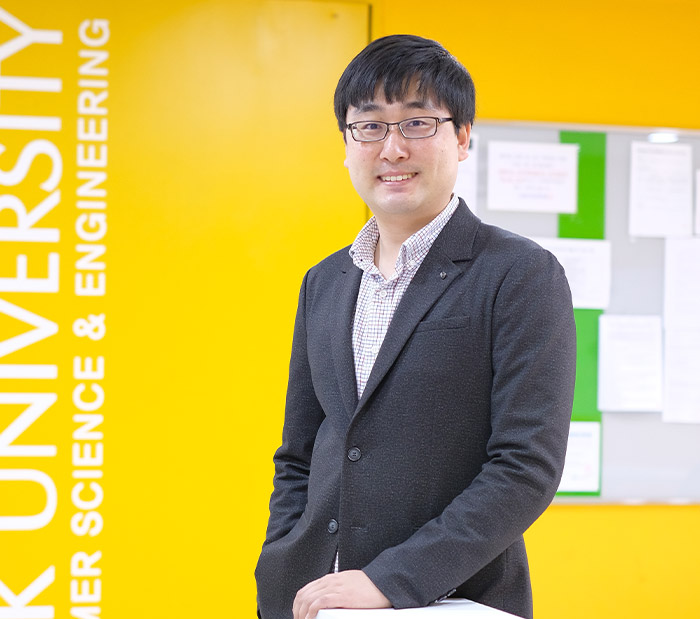
Chemical Engineering KIM, JUNG KYU Prof.
Development of an Environmental Friendly Biochar Electrocatalyst from Flowers
Prof. Jung Kyu Kim (School of Chemical Engineering, SKKU) and Prof. Uk Sim (NEEL Inc. & KENTECH) reported his collaboration research achievements with Prof. Chang Hyuck Choi (Department of Chemistry, POSTECH) and Dr. Heechae Choi (University of Cologne, Germany): development of an environmental friendly biochar electrocatalyst from Camellia japonica flowers for sustainable green hydrogen production and supercapacitor. The versatile use of sulfur self-doped biochar derived from Camellia japonica (camellia) flowers is demonstrated as a multifunctional catalyst for overall water splitting and a supercapacitor. The native sulfur content in the camellia flower facilitates in situ self-doping of sulfur, which highly activates the camellia-driven biochar (SA-Came) as a multifunctional catalyst with the enhanced electron-transfer ability and long-term durability. For water splitting, an SA-Came-based electrode is highly stable and shows reaction activities in both hydrogen and oxygen evolution reactions, with overpotentials of 154 and 362 mV at 10 mA cm−2, respectively. For supercapacitors, SA-Came achieves a specific capacitance of 125.42 F g−1 at 2 A g−1 and high cyclic stability in a three-electrode system in a 1 M KOH electrolyte. It demonstrated a high energy density of 34.54 Wh kg−1 at a power density of 1600 W kg−1 as a symmetric hybrid supercapacitor device with a wide working potential range of 0–1.6 V. This research achievement was selected as the cover art of the journal ‘Carbon Energy’ (DOI: https://doi.org/10.1002/cey2.207) *A sulfur self-doped multifunctional biochar catalyst for overall water splitting and a supercapacitor from Camellia japonica flowers (Journal: Carbon Energy, DOI: https://doi.org/10.1002/cey2.207) A development of an environmental friendly biochar electrocatalyst from Camellia japonica flowers for sustainable green hydrogen production and supercapacitor The cover art of the journal ‘Carbon Energy’
- No. 201
- 2022-08-30
- 2610
-
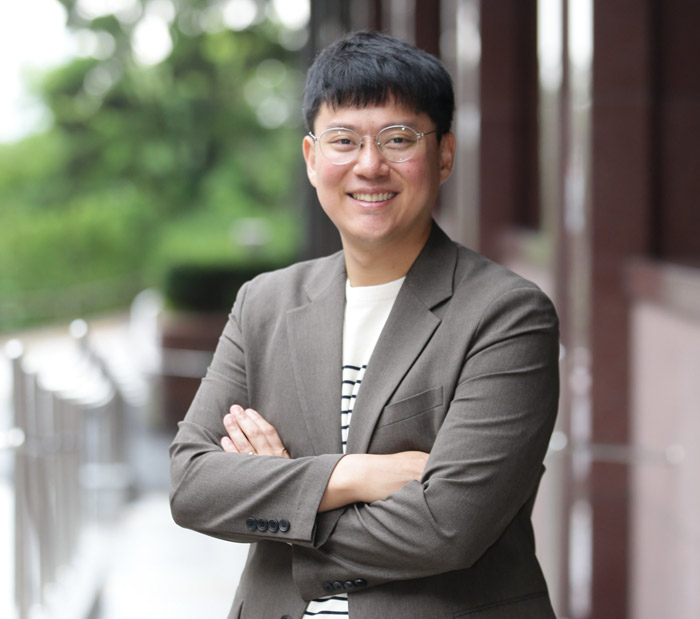
Public Affairs MOON, BYUNGGEOR Prof.
Financial Integration Scenario for Integrated Care: Focusing on the Case of Korea
Korea is experiencing a high rate of population aging and a low fertility rate at the same time. The OECD predicts that Korea will enter a “super-aged society” (having more than 20% of the population as the elderly) in 2026, eight years after entering the aging society. The purpose of this study is to examine the potential financial outcomes and the sustainability of implementing the British policy of integrating healthcare and social care in Korea. Furthermore, we predict the size of the integrated funds through this approach and analyze the operational and policy design requirements for successful integration through a case study of an existing financially integrated social care policy. Many countries, including Korea, are spending a lot of money on healthcare and social care due to the rapidly aging population, and the scale is expected to increase in the future. In such a situation, it is important to suggest a direction for reform through institutional analysis and to make a financial estimate based on the analysis of existing cases. Based on this, we find it meaningful to present an alternative policy that can be used for reform in the medical welfare field and to provide a policy direction for other countries that have become aging societies. We first analyze the size and trend of funds used for the care of the elderly out of Korea’s health insurance, long-term care insurance, and national budget. We then analyze the number of financial resources required and the cost-saving effect when the related financial resources are converted into local community care funds. This approach sheds light on the possibility of harmonizing healthcare policy for the elderly and integrated care under the existing insurance system and suggests a direction for reform in policies pertaining to healthcare for the elderly. Given that the same services are provided, we find that combining the finances from the insurance and the national budget would result in a fund of KRW 2.6 trillion to KRW 4.7 trillion. This approach also confirms that health care costs for the elderly can be reduced by 1-5% in the long term, which we estimate to be between KRW 1 trillion to KRW 4 trillion by 2050. We find that by tapping into the national budget to manage the pre-medical stage care, we can utilize an efficient operation mechanism, unlike insurance. We also confirm that information exchange and harmonious operation between the national budget and state-run insurance as well as feedback and incentives through performance management are necessary for these results to become a reality.
- No. 200
- 2022-08-19
- 2074
-
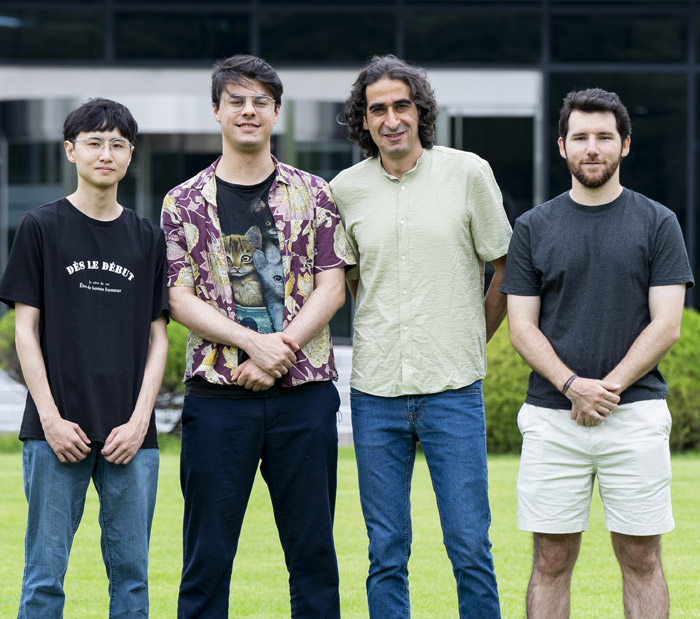
Advanced Materials Science and Engineering KOTIBA, HAMAD Prof. ·Russlan Jaafreh · Yoo Seong Kang · Santiago Pereznieto
AI for Understanding and Characterizing the Ductile-Brittle Behaviors of Mg-based Materials
On June 11th, the research team led by Prof. Kotiba Hamad at the school of advanced materials science and engineering (AMSE) published a paper titled “Brittle and ductile characteristics of intermetallic compounds in magnesium alloys: A large-scale screening guided by machine learning” in the Journal of Magnesium and Alloys (IF =11.8) which is ranked the 1st in the category of metallurgy & metallurgical engineering according to Clarivate’s Journal Citation Reports’ (JCR) ranking. This study is one of the works conducted by this group to investigate the applicability and the potential of AI techniques in the field of materials discovery and design. The findings of this work showed that, by machine learning (ML), a technique of AI, the brittle-ductile characteristics of intermetallic compounds that form in magnesium-based alloys are reliably, accurately, and quickly predicted. The ML results were validated by theoretical calculations done by density functional theory (DFT), shown in the figure below. The results can facilitate the designing of magnesium alloys with high performance for structural applications. This led to say that, due to the exploding computational capabilities, artificial intelligence, in its machine learning subcategory, has been utilized heavily in the field of material discovery and design for its ability to construct data-driven models that are magnitude faster than conventional experimentation or even physics-driven modeling and simulation. The present research group; Kotiba Hamad (Professor), Russlan Jaafreh (Ph.D. candidate), Yoo Seong Kang (Graduate collaborator/Currently working in ‘Computer Systems and Intelligence Laboratory’), and Santiago Pereznieto (Masters Student), have been utilizing the capabilities of AI in the field of material science & engineering, and have published multiple papers regarding this topic in high-tier journals such as ACS Applied Materials & Interfaces, Journal of Materiomics and many more. Related Links: -Russlan Jaafreh, Yoo Seong Kang, Kotiba Hamad, Journal of Magnesium and Alloys 2022, DOI: doi.org/10.1016/j.jma.2022.05.006. -Russlan Jaafreh, Yoo Seong Kang, and Kotiba Hamad, ACS Applied Materials & Interfaces 2021 13 (48), 57204-57213, DOI: doi.org/10.1021/acsami.1c17378 -Professor Kotiba’s Website: kotibahamad995.wixsite.com/aem-skku
- No. 199
- 2022-08-05
- 2835


